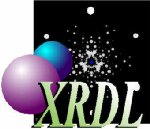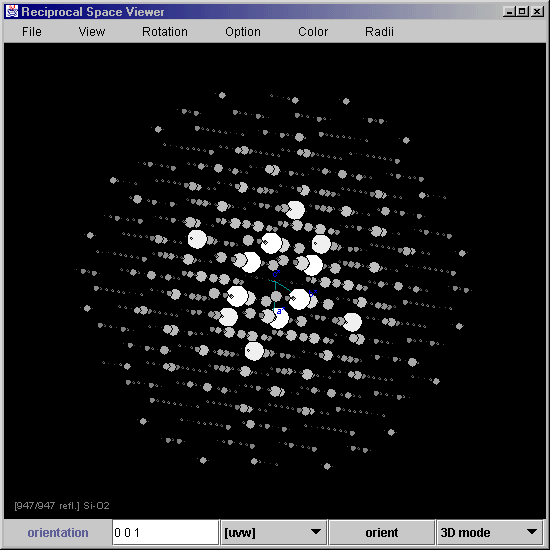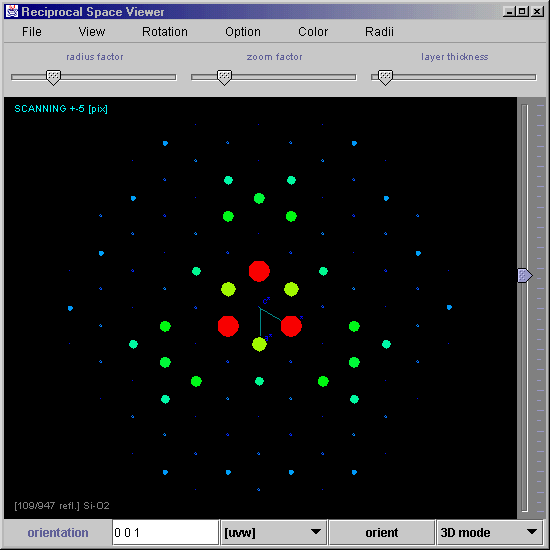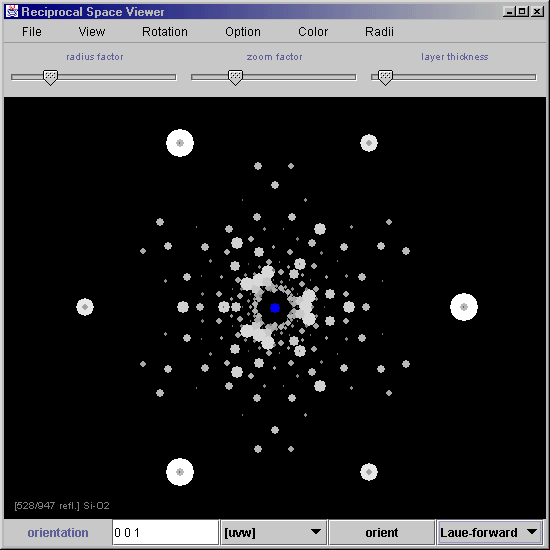XRDL -
reciprocal space viewer
(standalone application)
requires the java interpreter
JDK1.2 by ©Sun Microsystems
This program is also included in
the JSV package.
This program is here available
as a separate release although it is actually a modul of JSV.
You may download it to view example files or write your
own *.xrd files for viewing. It comes as a JAR file,
which you have to download and extract on your harddisk.
The basic feature is that XRDL allows
real time rotations of the reciprocal lattice points (3D
diffraction pattern) whereby you may switch to the Laue
mode or simply watch the corresponding
"0.layer" as in precession photographs or
elecron diffraction patterns. The color and radii of the
reflections may be chosen to be either uniform, ~F*F, ~F
or ~ SQRT(F) where F is the structure factor.
The rotations are done by
dragging the mouse (with pressed left/right mouse button)
over the canvas, by using the cursor keys or by selecting
a value from the menu.
|




